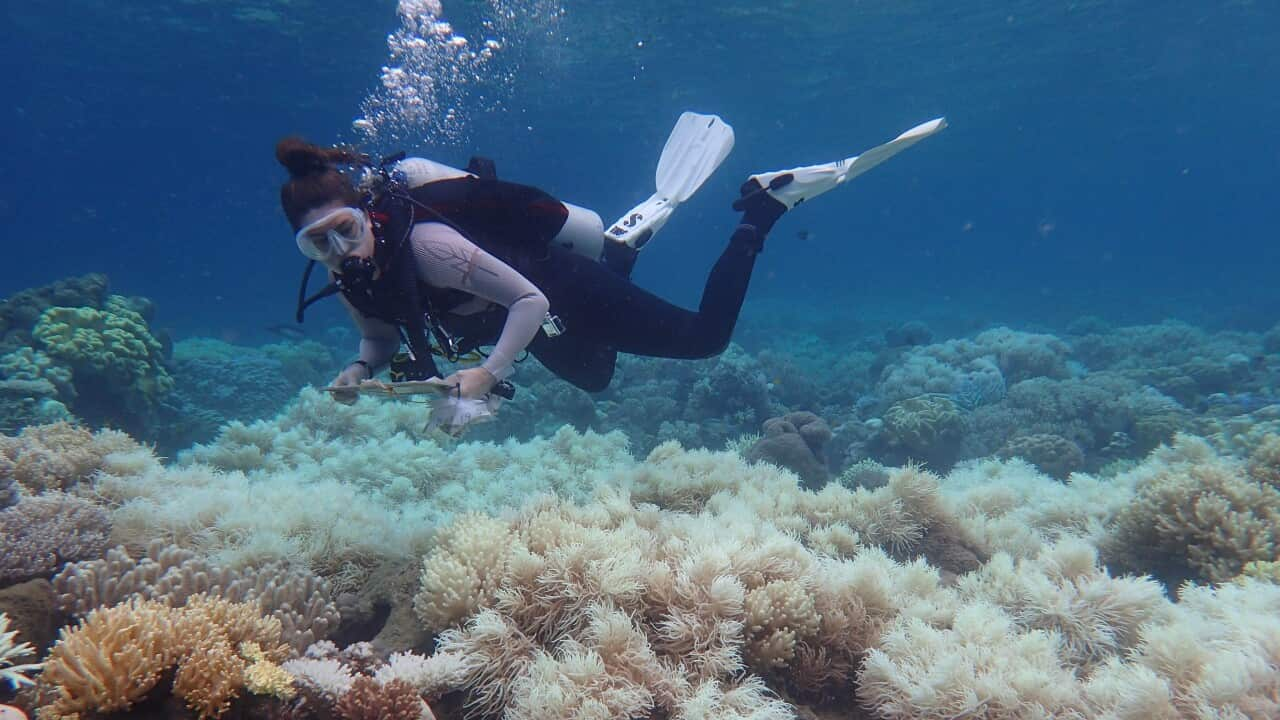Key Points
- Waters that were detected in December, increasing through to March
- The reef's mean sea surface temperature during the period was recorded at up to 0.4C above average
Coral bleaching in the Great Barrier Reef has been linked to a summer "marine heatwave".
In the lead up to summer 2021-22 there was increased coral cover detected across the reef, but warmer waters were detected in December, increasing through to March.
The findings were published on Tuesday in a report co-authored by the Australian Institute of Marine Science, the CSIRO and the Great Barrier Reef Marine Park Authority.
"Above-average water temperatures led to a mass coral bleaching event late in the summer," the report reads.
The reef's mean sea surface temperature during the period was recorded at up to 0.4C above average in some parts.
Bleaching of various severity was detected and some parts of the reef were unaffected.
"Compared to previous summers, cumulative impacts were limited this summer, with one major pressure, a marine heatwave, dominating," the report noted.
"It is important to note that bleached corals are alive, but stressed. Low or moderately bleached corals have a higher likelihood of recovering," researchers said.
Cyclone Tiffany tracked over the reef during summer but is believed to have caused minimal, if any, damage.

Coral bleaching in the Great Barrier Reef has been linked to a summer "marine heatwave". Source: AAP, AP / Jumbo Aerial Photography/AP
That month, a UN monitoring mission visited Australia to evaluate the federal government's efforts to protect the reef from climate change and other threats.
It will report back to the World Heritage Committee, which may decide to list the reef as in danger.
Tuesday's report noted the ongoing threat to the reef.
"Climate change remains the greatest threat to the reef," it said.
"The events that cause disturbances on the reef are becoming more frequent, leaving less time for coral recovery."


